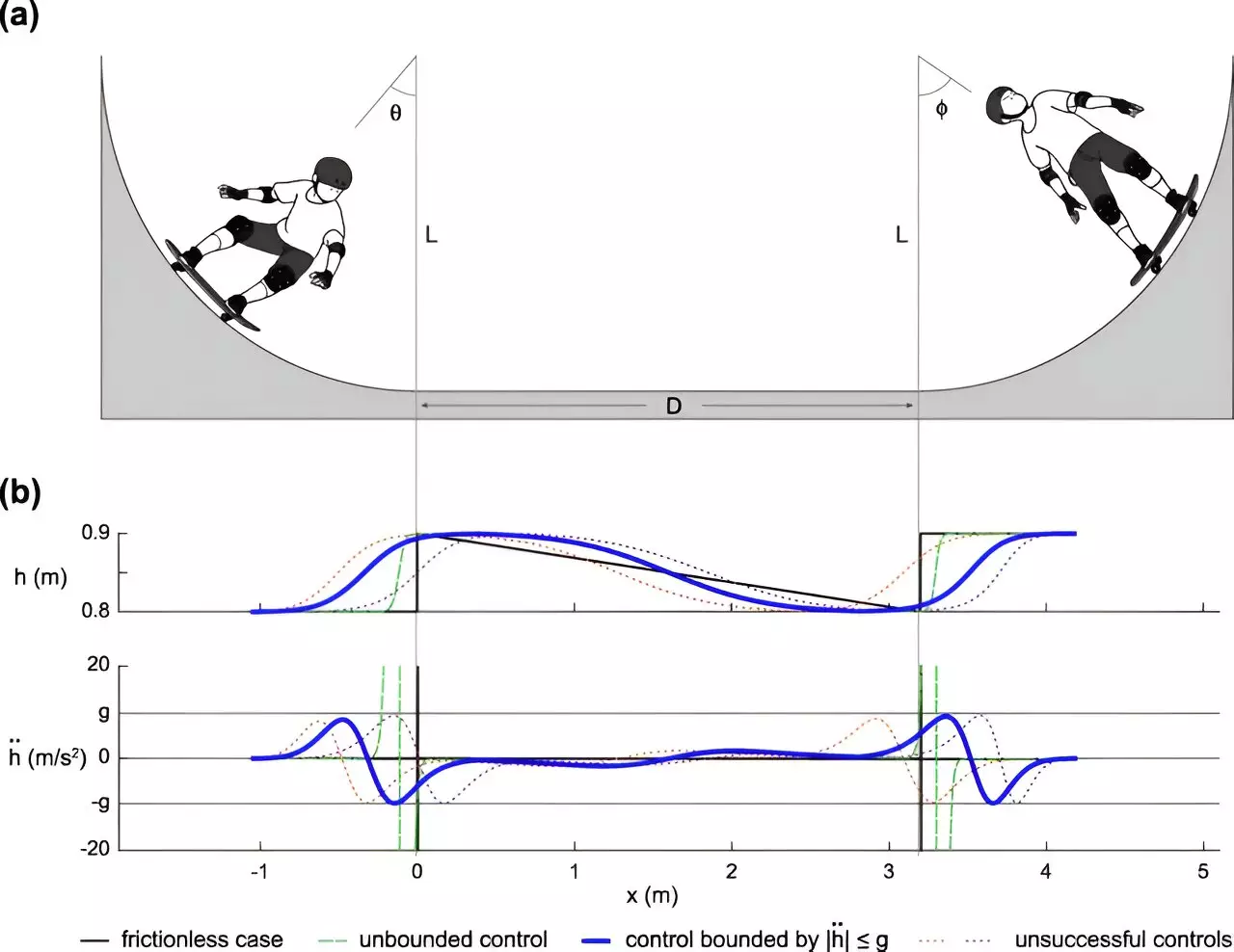A pioneering collaboration of engineers and mathematicians from ETH Zürich, alongside researchers from The Institute of Statistical Mathematics and ATR Institute International in Japan, has demonstrated the complex physics involved when skaters utilize the pumping technique on half-pipes. Published in the journal *Physical Review Research*, the study opens intriguing conversations not only in the realms of physics but also in terms of robotics and machine learning. By drawing a parallel between the physical dynamics of a swing set and the actions of skateboarders in a half-pipe, the researchers have stepped outside conventional paradigms, shedding light on the intricate movement patterns required for effective skating.
At its core, half-pipes are architectural marvels designed specifically for skateboarders. Typically constructed from wood or concrete, they illustrate a contrasting valley and mountain structure that allows skaters to perform a variety of tricks. The basic activity involves roller-like movements down one side of the half-pipe, traversing through the valley, and climbing up the other side. What elevates this activity from mere recreation to an exhibition of physics dynamics is the skater’s ability to generate momentum through a method known as pumping. Pumping is not merely about rolling; rather, it comprises a series of calculated body movements that dictate the skateboarding experience.
The crux of the research lies in its focus on the pumping technique, which is essential for speed and aerial maneuvers in a half-pipe. When a skater crouches in the valley and then pushes upward as they navigate the ramp’s curvature, they essentially manipulate their center of mass. This technique shares a surprising similarity with the physics of swinging, where the momentum from the downward swing is converted into upward motion. The researchers began their model by examining existing physics principles governing swings and pendulums, extending this framework to accommodate the empirical nuances of skateboarding.
Through meticulous analysis of videos depicting real skateboarding sequences, the team was able to adapt their theoretical model to reflect the dynamic variables present in a half-pipe environment. Skateboarding involves a unique interaction between the skater’s weight, the angle of the board, and the surface of the ramp, all of which contribute to the skater’s ability to accelerate. This complexity is reminiscent of multi-variant equations in physics, where each variable influences the others in a non-linear manner.
After establishing their theoretical model, the team evaluated the effectiveness of various pumping techniques, aiming to pinpoint the method that would yield the highest velocity. However, their findings revealed a caveat: the optimal pumping technique formulated through their model would actually launch the skater off the pipe in reality. This discrepancy exposes the gap between theoretical physics and practical application—a theme prevalent in many fields of engineering and science. Although their model provides insight into the mechanics of pumping, it also emphasizes the robust considerations needed when translating theory into practical technique.
Despite its limitations, the model holds promise beyond skateboarders. The researchers speculate that insights gleaned from their work could be instrumental for developing robotic systems capable of traversing uneven terrains. Just as skaters rely on fine-tuned movement dynamics to maintain balance and momentum, designing robots that can adapt their actions to varying inclines and declines could prove groundbreaking. This perspective broadens the significance of the study, indicating potential applications in fields such as robotic locomotion and autonomous vehicles.
The research encapsulates a remarkable intersection of physics, engineering, and sports, unveiling the underlying principles that govern complex human movements. By effectively modeling skateboarding dynamics through the lens of established physics, the team from ETH Zürich and their associates have laid a foundation for future explorations into both human and robotic movement. As we continue to dissect and replicate the intricacies of human activity, such studies will generate valuable insights, paving the way for innovations in technology and sports alike.

